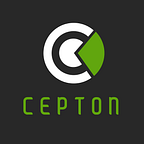In this part, we focus on common approaches to drive large cost reductions for lidar sensors and deliver cost-effective solutions that strike the right balance between performance, reliability and ease of integration.
As stated in his article at Forbes — “Money for Somethin?” — Sabbir Rangwala is correct that there is a performance price premium for lidars. As we discussed previously, price for performance (see Part 1) is also constrained by the price that markets can bear (see Part 2). This naturally raises the question of how lidar prices could scale down dramatically as performance increases significantly.
Generally speaking, lidar cost reduction strategies fall into three main categories:
1. DFM / DFC: Transforming a product shipping in smaller volumes to one that has to ship in automotive volumes requires making the design more manufacturable and lower in complexity. Design for manufacturing (DFM) techniques enable the former and design for cost (DFC) approaches enable the latter. For example, with DFM one could take a complex module that has multiple steps involved in assembly, including manual steps, and re-design it to enable substantial or full automation, thereby reducing assembly cost significantly. Likewise, from a DFC standpoint, one could integrate numerous components to reduce complexity and component costs. A typical approach is the introduction of Application Specific Integrated Circuits or ASICs which result in simplification, bill-of-materials (BOM) reduction and cost reduction in volume.
2. Volume Scale: When we compare price vs. performance, prices are typically compared for similar volumes rather than a low/mid volume price today versus a high-volume price a few years hence. However, today’s lidar prices are at lower volumes whereas pricing a few years from now is at much higher volumes — and this, in itself, is a large contributor to price reductions even as performance improves. Substantial cost reduction can be achieved with volume scaling by working with global contract manufacturers (CMs) and automotive Tier 1s.
There’s a corollary to this — in that using easily available and off-the-shelf components makes it easier to achieve price reductions compared to using unique or boutique opto-electronic or electronic components. This is one reason why Cepton has prioritized the use of mainstream technologies as much as possible.
3. Tier 1 Collaboration: In his article, Rangwala notes correctly — in the context of manufacturability and quality — that “Automotive Tier 1 LiDAR suppliers are masters at this, and best positioned to leverage this as a competitive tool.” Expanding on this point, Tier 1s can and do have a dual role here. They have long and deep experience in transforming products to achieve automotive grade quality, reliability and safety requirements. This is very difficult for hardware startups to achieve on their own and attempts to do so without Tier 1 collaboration are likely to be much more expensive and have a higher risk of failures. In addition, Tier 1s usually provide another benefit in that they can leverage their huge purchasing power much more effectively than a startup can, to enable volume price reductions beyond what would normally be possible for a small company. For these reasons, Cepton has put a high priority on Tier 1 collaboration, especially with our partner Koito. The image below provides a simplified view of how we see the roles and responsibilities involved in collaborating with Tier 1s.
We can also approach the question of cost scaling at a module level by looking at the main modules that are part of a lidar and assessing which modules have scope for significant cost reduction in the three categories listed above. As a rough starting point, the table below provides a high-level assessment keeping in mind common types of lidar technologies.
Cepton recently announced our new high performance, automotive grade lidar sensor — the Vista-X90 — priced at <$1000 at automotive volumes. In the case of lidars of some competitors, achieving sub-$1,000 pricing would require roughly an order of magnitude cost reduction from their current prices (>$10–20K). In the case of Cepton, the required cost scale-down factor is far less. In addition, Cepton has also completed due diligence with our supply chain / CMs on achievable costs and opportunities for further cost reductions. We therefore have high confidence in our ability to lock into competitive automotive price roadmaps.
Read the previous articles in this series: Part 1 | Part 2
____________________
By Dr. T. R. Ramachandran, Chief Marketing Officer at Cepton
Follow Cepton for more information: LinkedIn | Twitter | YouTube
